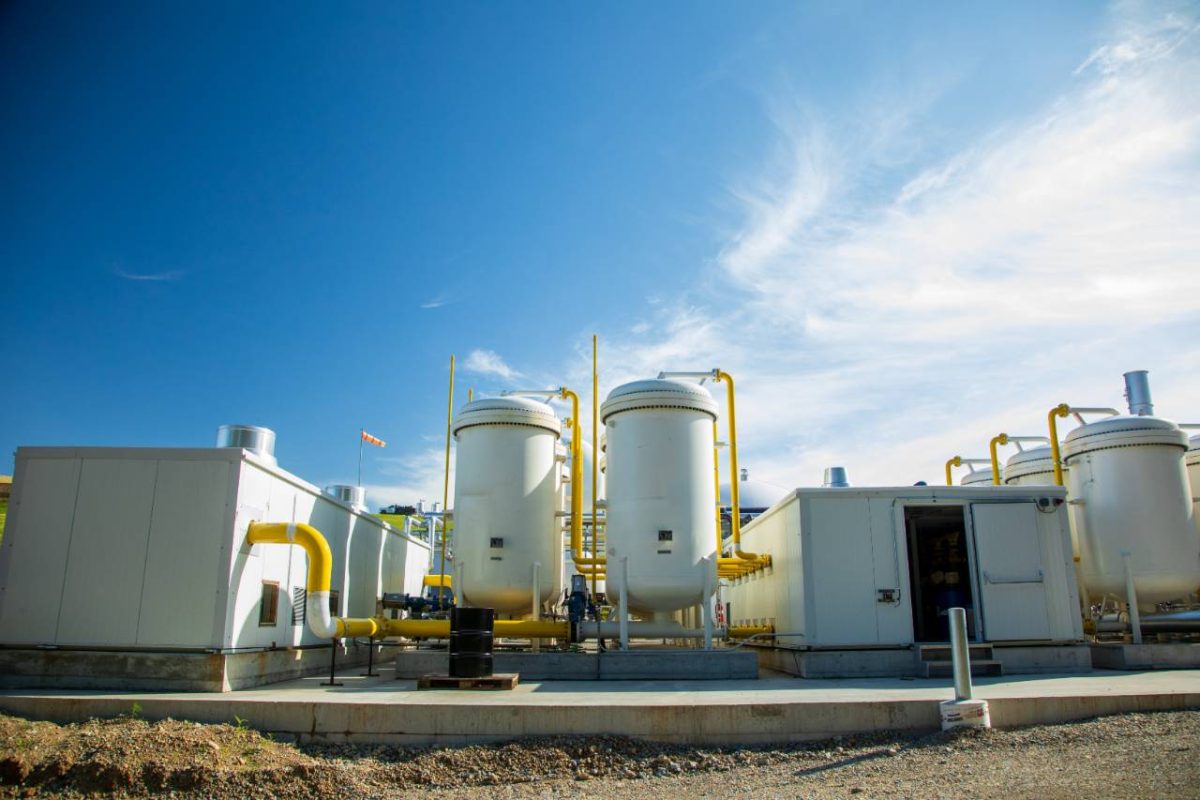For nearly six decades, environmentalists have celebrated April 22 as Earth Day. The day is observed across the globe and often consists of trash clean-ups, recycling drives, protests, and a general increase in awareness of the environmental impacts the planet is facing. Earth Day originated in the early 1970s amid a growing sentiment of environmental concern fueled by anti-war protests and “hippies.” Wisconsin native Gaylord Nelson, the state’s former governor and US Senator, was the leading proponent of Earth Day and is credited with making the holiday a nationally recognized day. In honor of Nelson’s environmentalism, UW-Madison created the Nelson Institute for Environmental Studies in his name.
After Nelson departed from politics, he actively advocated for environmental reform and protection.
“The ultimate test of man’s conscience may be his willingness to sacrifice something today for future generations whose words of thanks will not be heard,” Nelson said at the inaugural celebration of Earth Day.
Dane County has remained a hotbed for environmentalism decades after Nelson’s time in politics. Dane County is home to many private and public projects for conservation and environmental protection. The Dane County Office of Energy & Climate Change was established in 2017 to guide the county to be more environmentally conscious; a significant goal was to use more renewable energy and eventually reach net-zero emissions. In 2023, Dane County became the fourth county in the United States to reach the milestone of using 100% renewable electricity at all county facilities.
Kathy Kuntz has served as the director of the Dane County Office of Energy & Climate Change, where she manages various projects and initiatives grounded in environmental protection and responsibility.
“Our goal now is to be carbon neutral across our facilities, fleet and land operations by 2030. We’re a little bit unique as Dane County because we have farmland and significant natural areas. So we have the opportunity to sequester carbon in the ground and plants, especially in the roots of prairies, let’s say, in a way that helps offset the remaining emissions from our operations,” Kuntz said.
The office has implemented a program to encourage private entities to make their own progress regarding environmentalism. The Climate Champion Program encourages county businesses and groups to implement various ways to be more environmentally conscious, such as renewable energy, land use, water savings, and sustainable building design. The program has highlighted dozens of projects across the county, including three within Stoughton; Biological Farming Friends received the award for sustainable land use, no-till agriculture, and reducing fertilizer and chemical use; Emmi Roth Specialty Cheeses received the award for their all-electric cheese manufacturing facility; and the Stoughton Public Works Facility received the award for solar panel use, and the building uses less than half the energy of a comparable facility.
“We know there are people all around Dane County- businesses, local governments, nonprofits- doing amazing things, and we want to celebrate that. You and I live in the Midwest; here in the Midwest, people don’t brag about what they do; that’s just not how we were raised … we’re like, okay, you don’t feel comfortable bragging about what you’re doing, we’re gonna brag about it for you. We’re going to showcase these things for you,” Kuntz said.
Another major project the county government facilitates is the Dane County Landfill, managed by the Department of Waste and Renewables. County leaders have incorporated many innovative solutions to the landfill to offset the environmental burden caused by pollutants and the trash of Dane County. The Dane County Landfill is the main landfill that services county residents; annually, the landfill collects over half a billion pounds of garbage. “We see about 1400 tons of waste each day, … the landfill is the second highest (geographical) point in Dane County, right after Blue Mounds State Park,” said Wyeth Augustine-Marceil, the county’s Sustainability Engagement Coordinator.
The landfill has recently built a renewable natural gas facility that collects methane biogas stored from within the landfill and converts it into a cleaner alternative version of natural gas used to power Dane County vehicles. When landfills emit methane gas, the atmosphere warms; however, the RNG facility captures the methane before it can be emitted and converts it into a renewable resource. The RNG facility also offers biogas off-put services, allowing biogas producers to sell their fuel onto the grid, all while getting harmful methane out of the atmosphere. An example of this service is a dairy farmer who uses anaerobic digesters that break down cow manure into methane gas, which can then be used as a fuel source. This program allows farmers a market for manure, limits emissions, and provides cleaner-burning alternatives to traditional fossil fuels.
Innovation and research are also helping create environmental solutions for the future. The University of Wisconsin-Madison is investing in many initiatives towards a cleaner environment. Rob Anex is a professor of Biological Systems Engineering at UW-Madison and has a unique focus on decarbonization technologies, carbon capture, and mineralization. Anex is also the co-founder of Alithis Carbon Solutions, a company that sequesters carbon emissions from the atmosphere and can store the captured carbon in cement. Anex’s research allows carbon capture to offer carbon negative cement alternatives, meaning not only can Anex’s technology remove harmful carbon emissions, but it can also minimize future emissions that would be produced while making cement. The cement industry produces nearly 25% of all industrial carbon emissions and 8% of all global emissions.
“Our unique patented tech gives us a double, double whammy: On the one hand we remove CO2 from the air as well as avoid CO2 emissions from cement. On the other hand we have two revenue streams: permanent carbon removal, as well as a commercial cement alternative byproduct,” Alithis CEO Quentin Philippe said.
Anex’s research is just one example of the world class work that is being done at UW-Madison to find climate solutions. Although the Alithis technology is 5-15x more resource efficient than comparable carbon capture technologies, it still faces many challenges. In order to sequester enough carbon to meet the 1.5°C (2.7 °F) temperature target as laid out in the Paris Climate Agreement, carbon capture would need to be the #1 global industry every day until 2050 to prevent irreparable environmental damage through global warming. Anex recently spoke at an educational panel about Climate Journalism and Carbon Capture efforts needed to counteract rising emissions causing climate change and global temperatures increasing.
Wisconsin has been leading in environmental protection for decades through innovation, advocacy, and world-class research.
Categories:
A Hotbed for Environmentalism
Environmental Innovation &
Climate Research
Dane County’s Renewable Natural Gas facility is the first of its kind. The plant was constructed in 2019 for roughly $29 million using world-class technology. The plant collects methane gas and converts it into biogas that can fuel the entire fleet of Dane County municipal vehicles.
0
More to Discover
About the Contributor

Simon Mehring, Editor-in-Chief
Simon is a senior, and this is his third year on staff! He is the publication’s Editor-in-Chief this year! Simon joined the Norse Star his sophomore year because he enjoys getting to tell other peoples’ stories, and learning about new topics and individuals. Outside of the classroom, Simon spends his time outdoors and living actively, and also enjoys reading the news and keeping up-to-date with politics. After high school, Simon looks to attend law school and practice Environmental Law or work for the National Park Service as an attorney!







